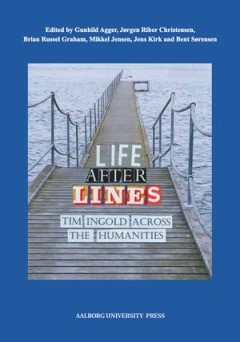Filter by

Thermal Integrity in Mechanics and Engineering
The book is targeted at engineers, university lecturers, postgraduates, and final year undergraduate students involved in computational modelling and experimental and theoretical analysis of the high-temperature behavior of engineering structures. It will also be of interest to researchers developing the thermal strength theory as a branch of continuum mechanics. Thermal integrity is a multi…
- Edition
- -
- ISBN/ISSN
- 978-3-662-46968-2
- Collation
- 112 b/w illustrations, 17 illustrations in colour
- Series Title
- -
- Call Number
- -

Thermal Engineering Studies with Excel, Mathcad and Internet
This book provides the fundamentals of the application of mathematical methods, modern computational tools (Excel, Mathcad, SMath, etc.), and the Internet to solve the typical problems of heat and mass transfer, thermodynamics, fluid dynamics, energy conservation and energy efficiency. Chapters cover the technology for creating and using databases on various properties of working fluids, coolan…
- Edition
- -
- ISBN/ISSN
- 978-3-319-26674-9
- Collation
- 63 b/w illustrations, 221 illustrations in colour
- Series Title
- -
- Call Number
- -

Thermal Effects in Supercapacitors
This Brief reviews contemporary research conducted in university and industry laboratories on thermal management in electrochemical energy storage systems (capacitors and batteries) that have been widely used as power sources in many practical applications, such as automobiles, hybrid transport, renewable energy installations, power backup and electronic devices. Placing a particular emphasis o…
- Edition
- -
- ISBN/ISSN
- 978-3-319-20242-6
- Collation
- 8 b/w illustrations, 24 illustrations in colour
- Series Title
- -
- Call Number
- -

Multiphase Flow Dynamics 1
In its fifth extended edition the successful monograph package “Multiphase Flow Dynamics” contains theory, methods and practical experience for describing complex transient multi-phase processes in arbitrary geometrical configurations, providing a systematic presentation of the theory and practice of numerical multi-phase fluid dynamics. In the present first volume the local volume and time…
- Edition
- 1
- ISBN/ISSN
- 978-3-319-15295-0
- Collation
- XLIV, 840
- Series Title
- -
- Call Number
- -

Modern Cold Spray:Materials, Process, and Applications
This book focuses on the current state of the art of the novel cold spray process. Cold spray is a solid state metal consolidation process, which allows engineers to tailor surface and shape properties by optimizing process parameters, powder characteristics and substrate conditions for a wide variety of applications that are difficult or impossible by other techniques. Readers will benefit fro…
- Edition
- 1
- ISBN/ISSN
- 978-3-319-16771-8
- Collation
- X, 429
- Series Title
- -
- Call Number
- -

Modelling of Convective Heat and Mass Transfer in Rotating Flows
This monograph presents results of the analytical and numerical modeling of convective heat and mass transfer in different rotating flows caused by (i) system rotation, (ii) swirl flows due to swirl generators, and (iii) surface curvature in turns and bends. Volume forces (i.e. centrifugal and Coriolis forces), which influence the flow pattern, emerge in all of these rotating flows. The main pa…
- Edition
- 1
- ISBN/ISSN
- 978-3-319-20960-9
- Collation
- XXII, 235
- Series Title
- Mathematical Engineering
- Call Number
- -

Electron Microscopical Investigation of Interdiffusion and Phase Formation at…
Christian Rockenhäuser adresses phase formation and cation interdiffusion of the GdxCe1-xO2-x/2-and SmxCe1-xO2-x/2-material systems at temperatures ranging from 970 to 1270°C. Diffusion couples with CeO2/Sm2O3 and CeO2/Gd2O3 interfaces were fabricated for the investigations. The resulting reaction phases were investigated utilizing transmission electron microscopy (TEM) and allow conclusions …
- Edition
- 1
- ISBN/ISSN
- 978-3-658-08793-7
- Collation
- 20 b/w illustrations
- Series Title
- -
- Call Number
- -

Modeling Thermodynamic Distance, Curvature and Fluctuations
This textbook aims to briefly outline the main directions in which the geometrization of thermodynamics has been developed in the last decades.The textbook is accessible to people trained in thermal sciences but not necessarily with solid formation in mathematics. For this, in the first chapters a summary of the main mathematical concepts is made. In some sense,this makes the textbook self-cons…
- Edition
- 1
- ISBN/ISSN
- 978-3-319-81603-6
- Collation
- X, 202
- Series Title
- Understanding Complex Systems
- Call Number
- -

Metabolomik Mikroba
Dr David Beale CSIRO Tanah & Air Dr Konstantinos Kouremenos Metabolomik Australia, Institut Bio21 Universitas Melbourne Prof. Enzo Palombo Universitas Teknologi Swinburne
- Edition
- 1
- ISBN/ISSN
- 978-3-319-46324-7
- Collation
- VII, 321
- Series Title
- -
- Call Number
- -

Life After Lines : Tim Ingold across the humanities
“What do walking, weaving, observing, singing, storytelling, drawing and writing have in common? The answer is that they all proceed along lines of one kind or another.” This is the first Q&A in Tim Ingold’s seminal Lines. A brief history (2007). In The Life of Lines, the sequel from 2015, he opposes lines and blobs and proceeds: “Life began when lines began to emerge and to escape the …
- Edition
- -
- ISBN/ISSN
- 978-87-7210-287-0
- Collation
- -
- Series Title
- -
- Call Number
- 302.23 LIF
 Computer Science, Information & General Works
Computer Science, Information & General Works  Philosophy & Psychology
Philosophy & Psychology  Religion
Religion  Social Sciences
Social Sciences  Language
Language  Pure Science
Pure Science  Applied Sciences
Applied Sciences  Art & Recreation
Art & Recreation  Literature
Literature  History & Geography
History & Geography